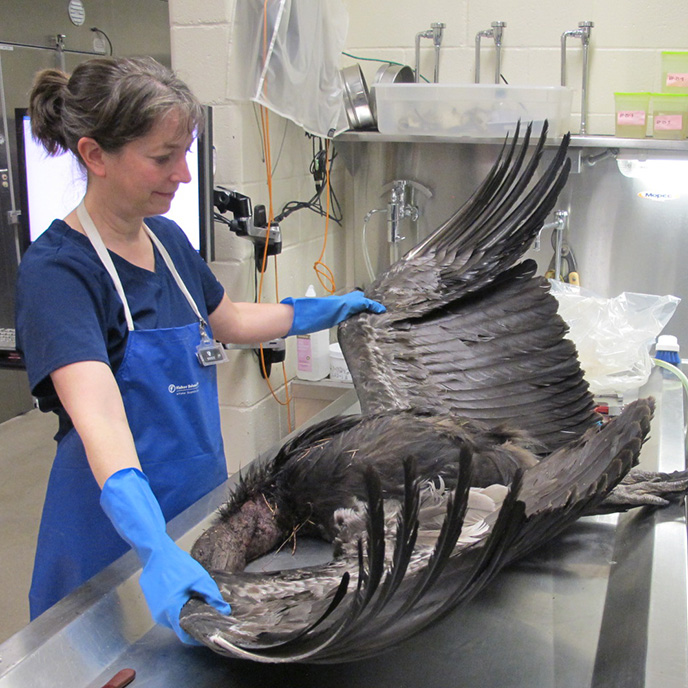
Every day Dr. Rebecca Kagan walks through her office door, she does so with the realization that very few people in the world do what she does for a living.
In fact, you can count on one hand the number of wildlife forensics pathologists there are in the world, let alone the United States.
“The lab where I work is the only federal wildlife crime laboratory for the study of wildlife forensics,” Kagan said. “For full-service wildlife forensic pathology of wildlife in the United States, we’re it.”
Kagan’s lab is the U.S. Fish & Wildlife Service National Forensics Laboratory in Ashland, Ore. As a veterinary pathologist since 2010, she has worked with Federal Fish and Wildlife agents and refuge officers on suspected legal violations.
Think CSI for wildlife. This involves collecting evidence, figuring out what analyses to do, putting together test results and ultimately determining a cause of death.
Wolves, California condors and bald and golden eagles are the most seen species at Kagan’s lab. But she has also seen cases involving Florida panthers, walruses, grizzly and polar bears, and other federally protected species.
Every animal that comes through the lab gets a full external and internal examination. Kagan has also learned crime scene investigation techniques that come in handy.
“Alternate light source examinations, skeletonization and microscopic examinations of hairs are all things I now do routinely,” she said.
“Radiographs, including CT images, and photography are also essential and part of our protocol for every case.”
As you can imagine, it’s not the easiest job in the world.
“Determining the cause of death can be challenging in wildlife because there is often no history and many times, we are given a body that is very decomposed,” Kagan said. “Sometimes just bones are left but I’m often amazed at what we can still determine from just that.”
Kagan and her team have other tricks up their sleeves. Many of the bodies arrive at the lab completely dried out after sitting in nature but are rehydrated. The lab even has a dermestid beetle colony which provide a gentle and fast way to clean off bones.
“This enables us to look at the bones closely for fracture patters and more easily retrieve embedded metal,” Kagan said, “but combing through masses of beetles is definitely not something I ever thought I’d be doing as a pathologist.”
Thes techniques are important if federal charges are filed against a suspected offender, although it’s rare that a case will go to trial. Most are pleaded out or settled.
Kagan has testified twice, once in front of a grand jury and the other at a trial for an individual who was charged with poisoning a Bald Eagle with what Kagan determined was a tightly regulated poison.
“The lawyers took it easy on me when I was on the stand,” she recalled. “They didn’t know much about wildlife pathology.”
Kagan’s interest in pathology started at Iowa State. She recalled looking at two microscope slides of intestine; one with transmissible gastroenteritis and one with parvovirus.
“The instructor pointed out how the two different viruses cause two different lesions and I saw it,” she said. “It was like magic.”
After graduating in 2004, she completed a small animal internship, and a zoo pathology residency program. That led to a two-year zoo pathology fellowship at the San Diego Zoo where she developed connections with the U.S. Fish and Wildlife Service Forensics Laboratory.
“I love the microscope’s ability to reveal secrets,” Kagan said. “My job definitely not boring.”
July 2024
